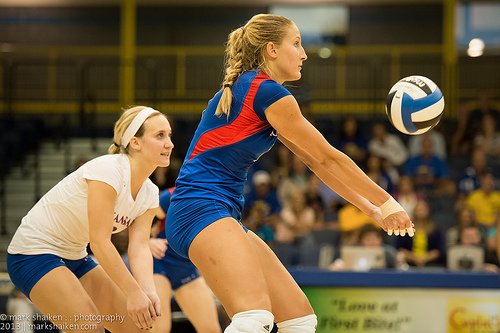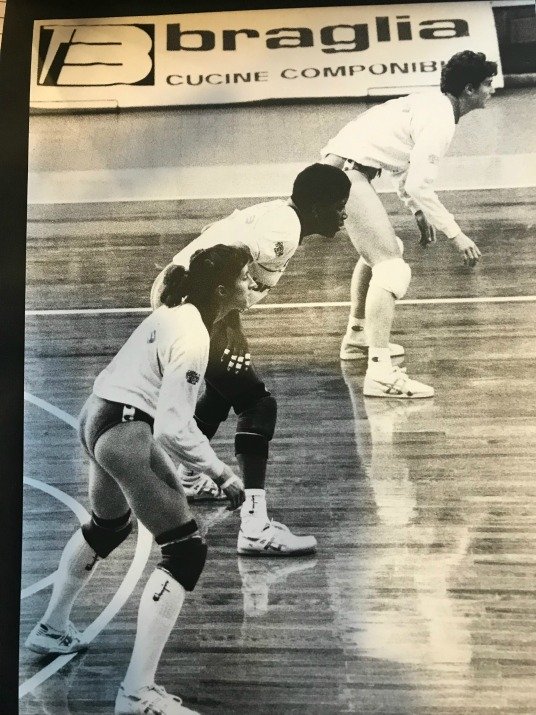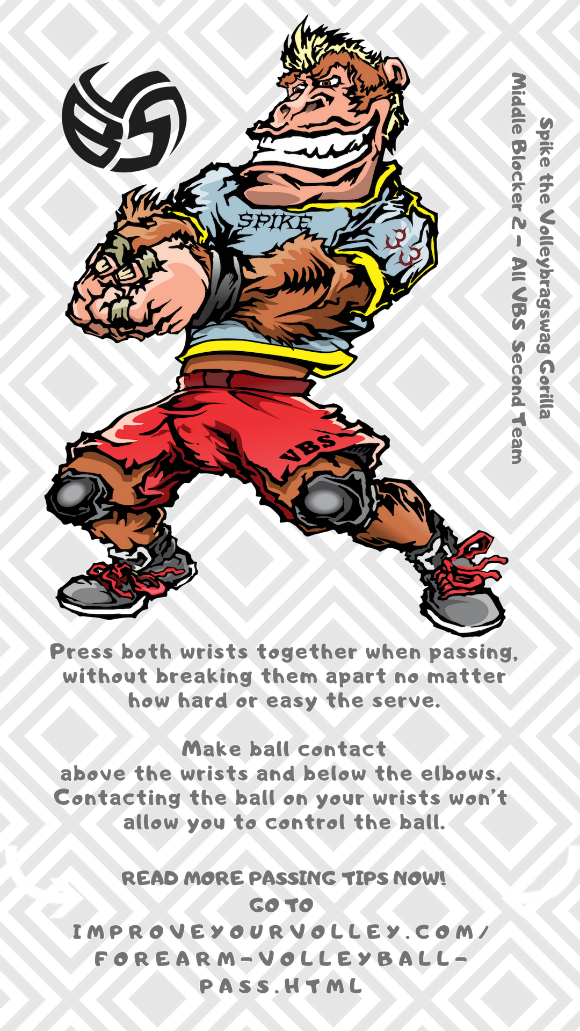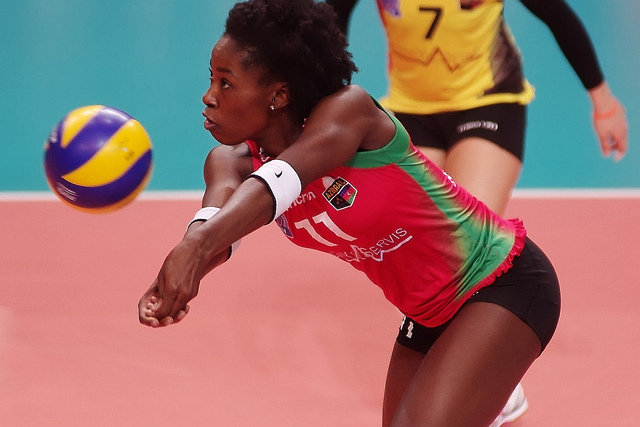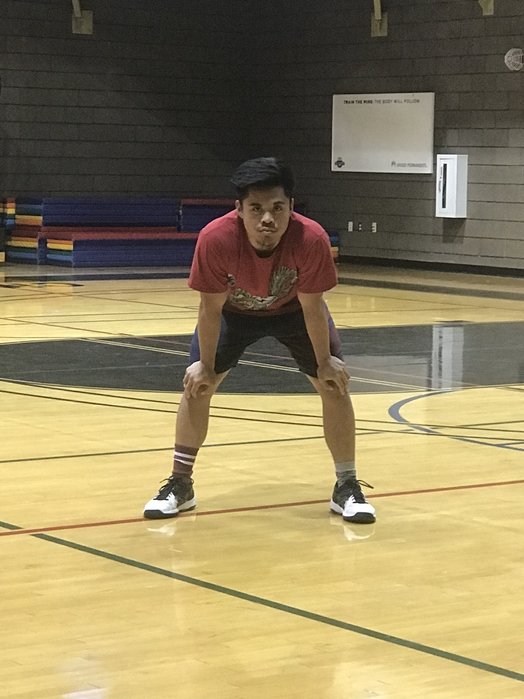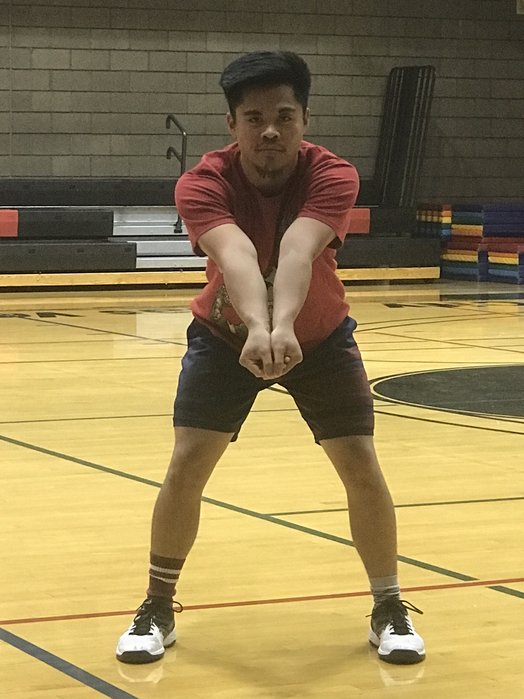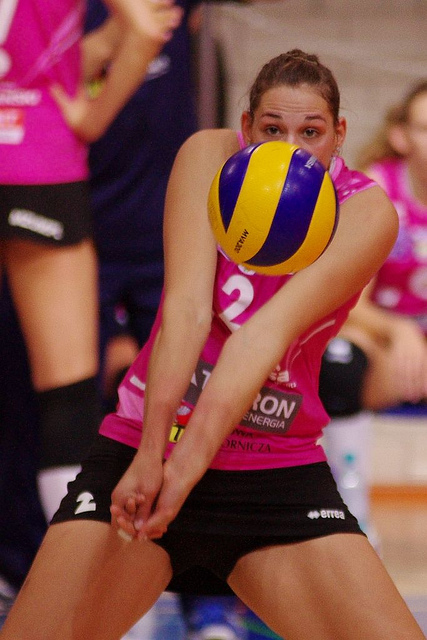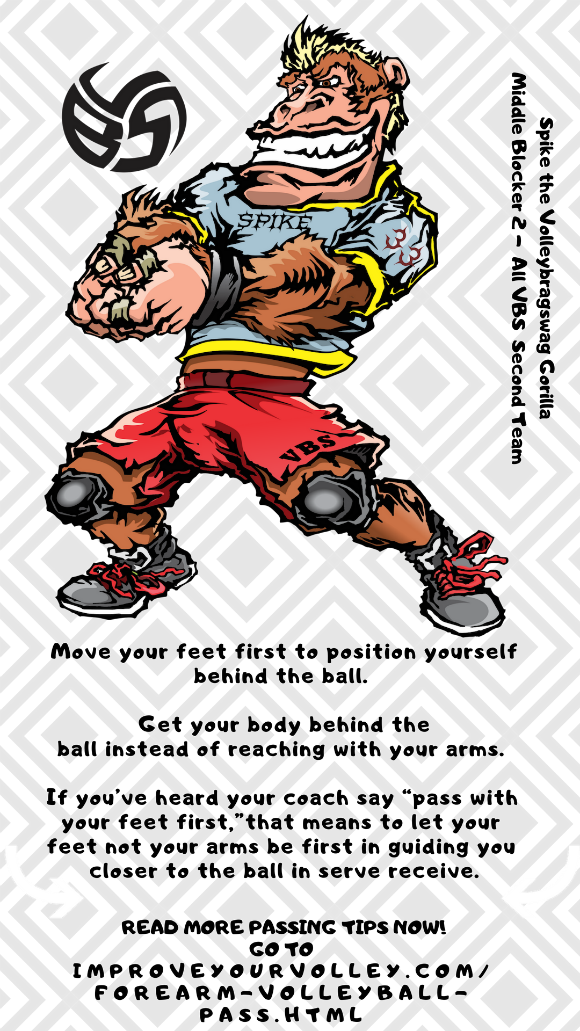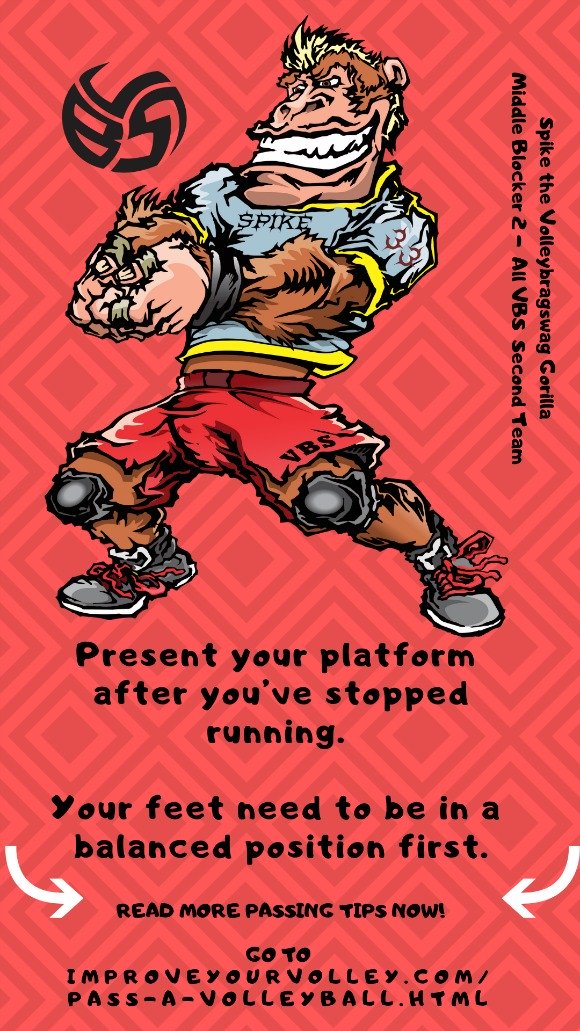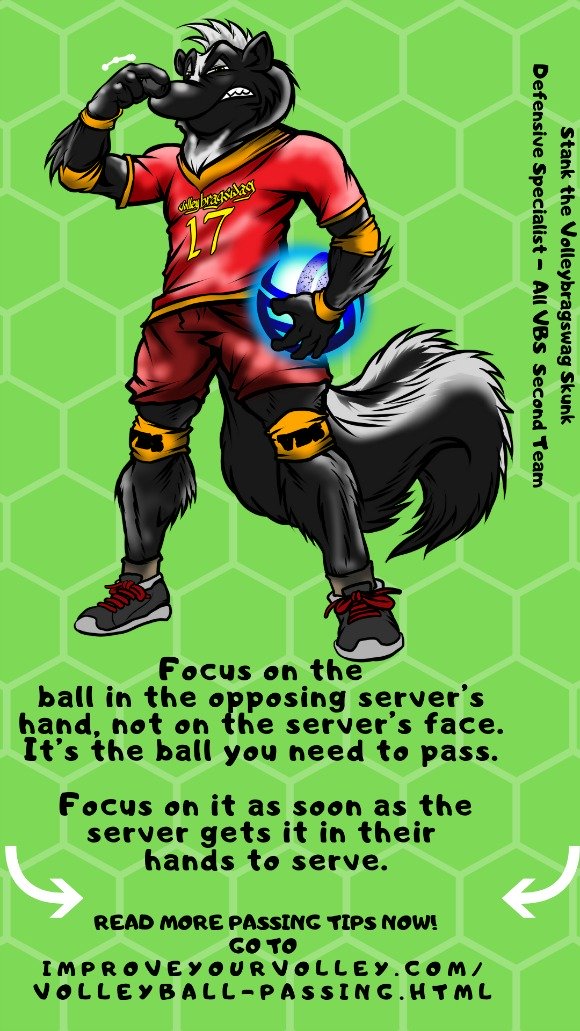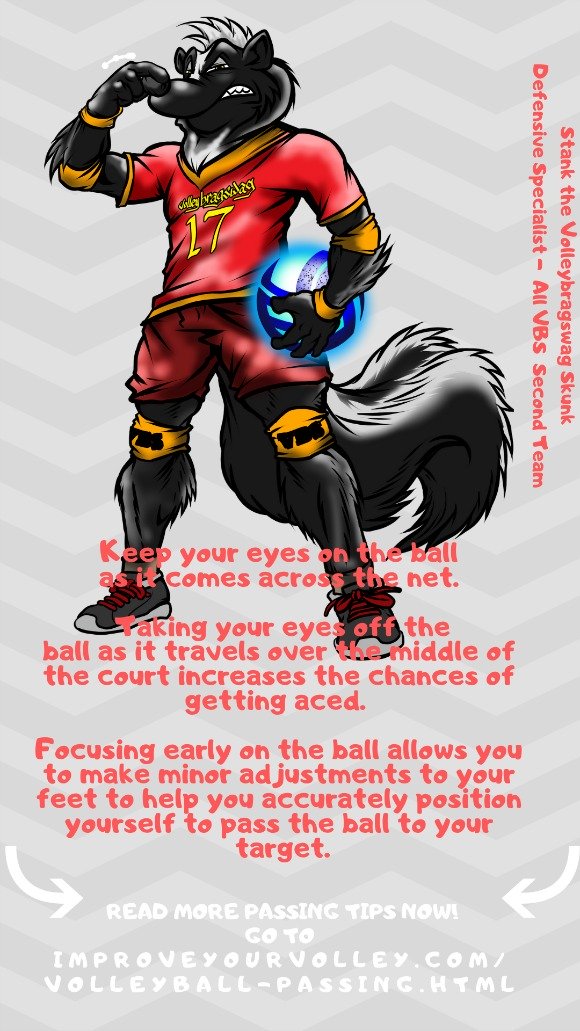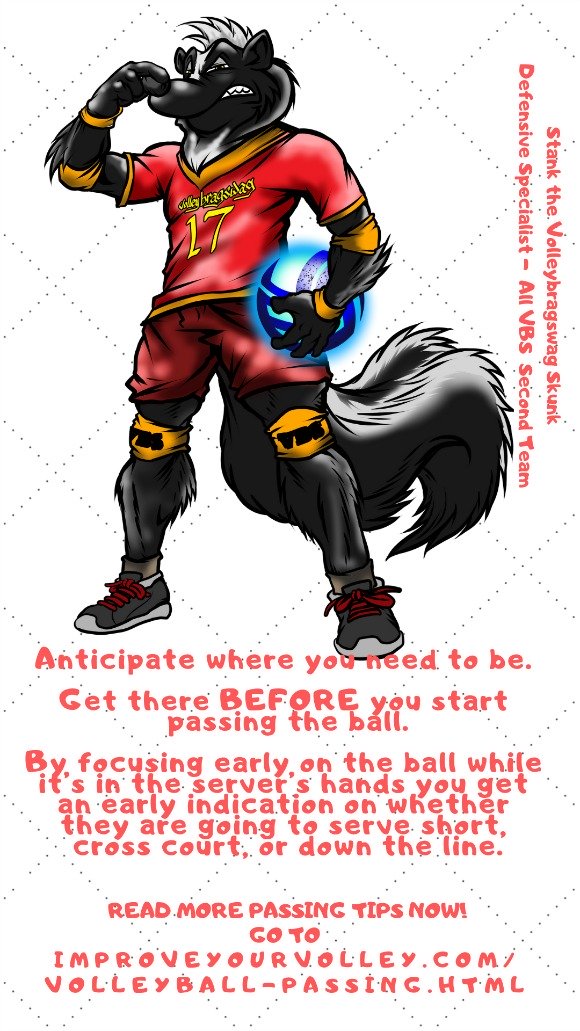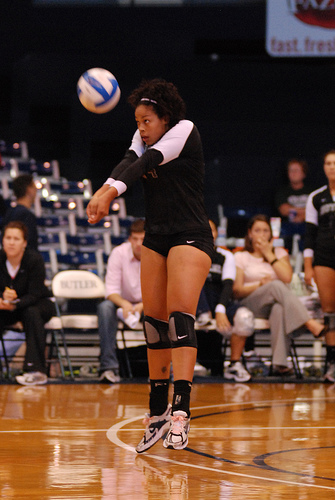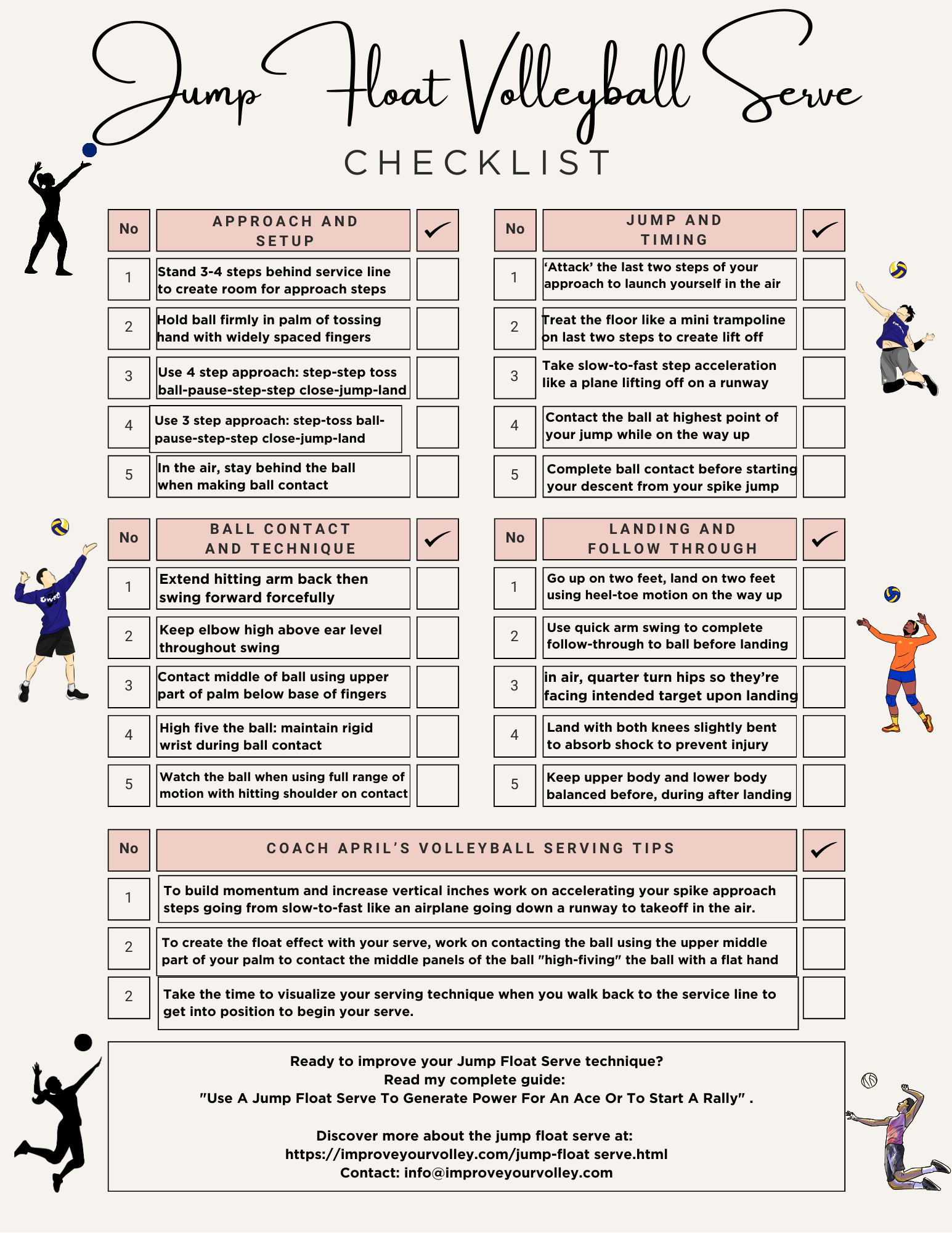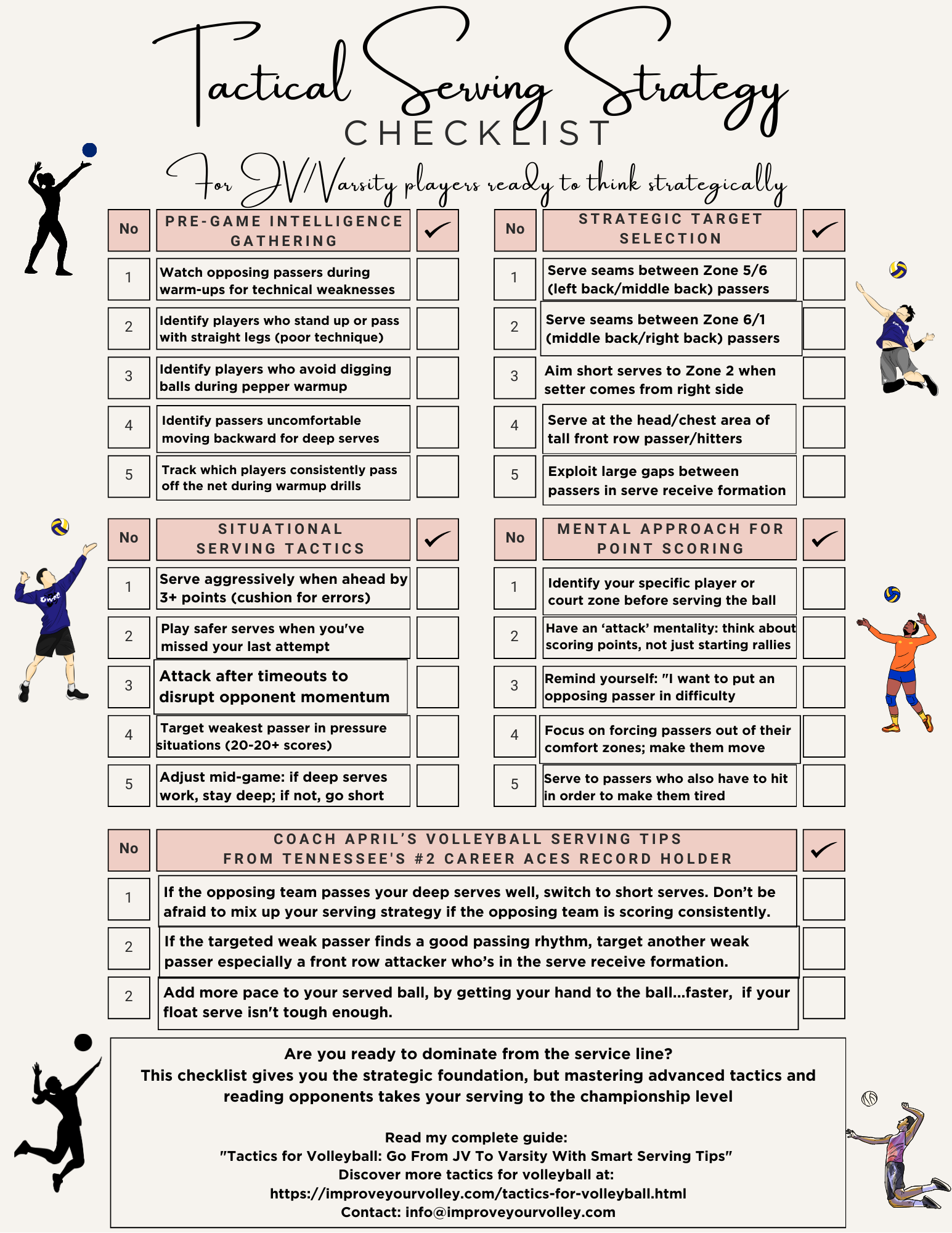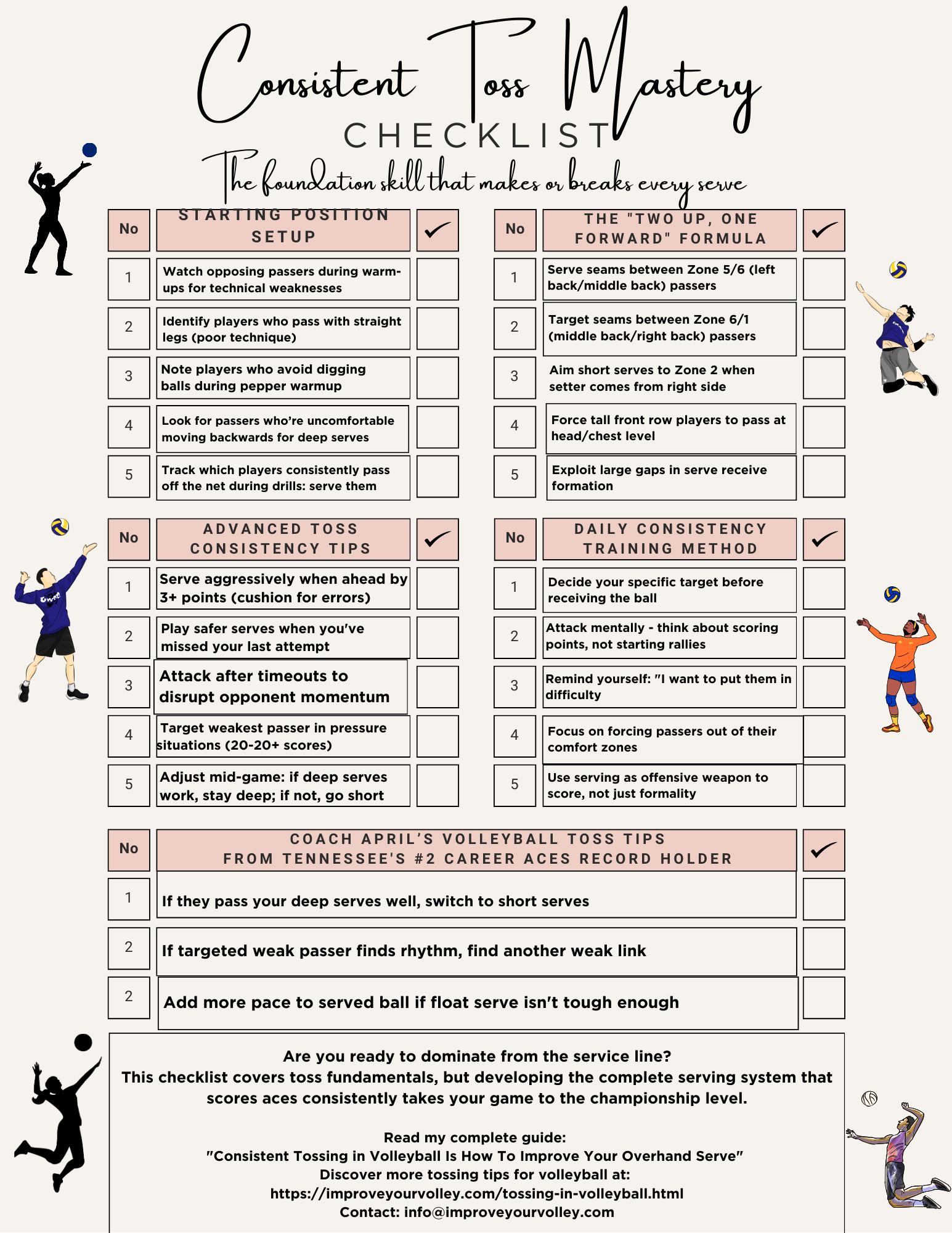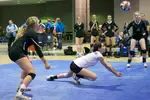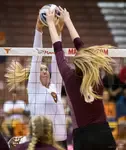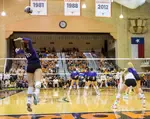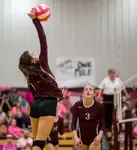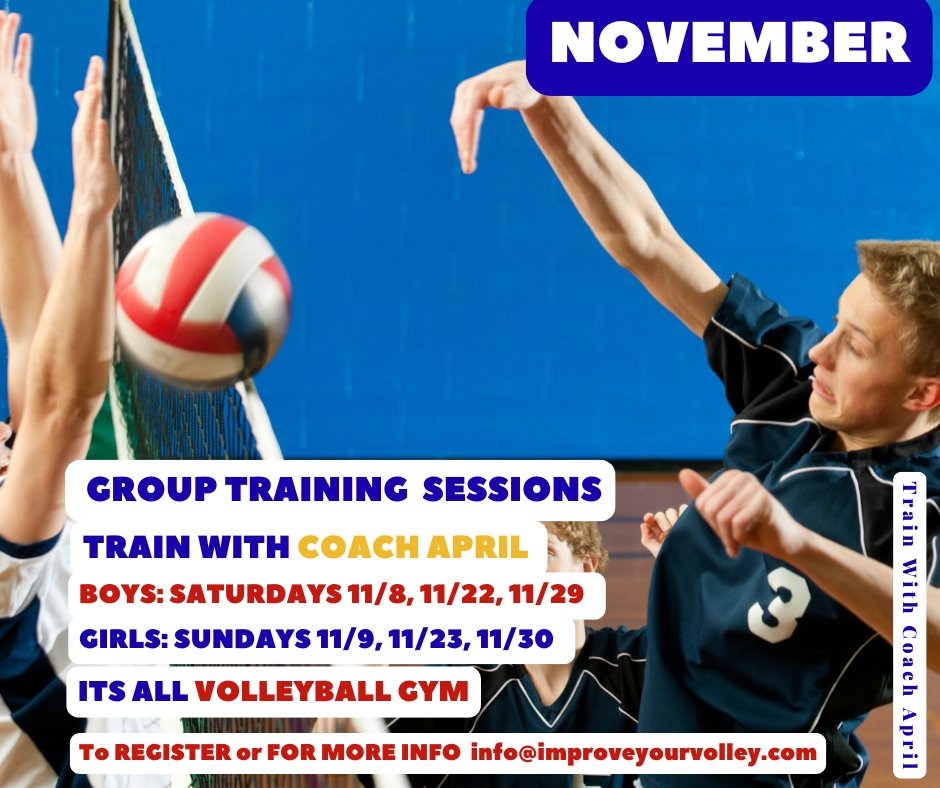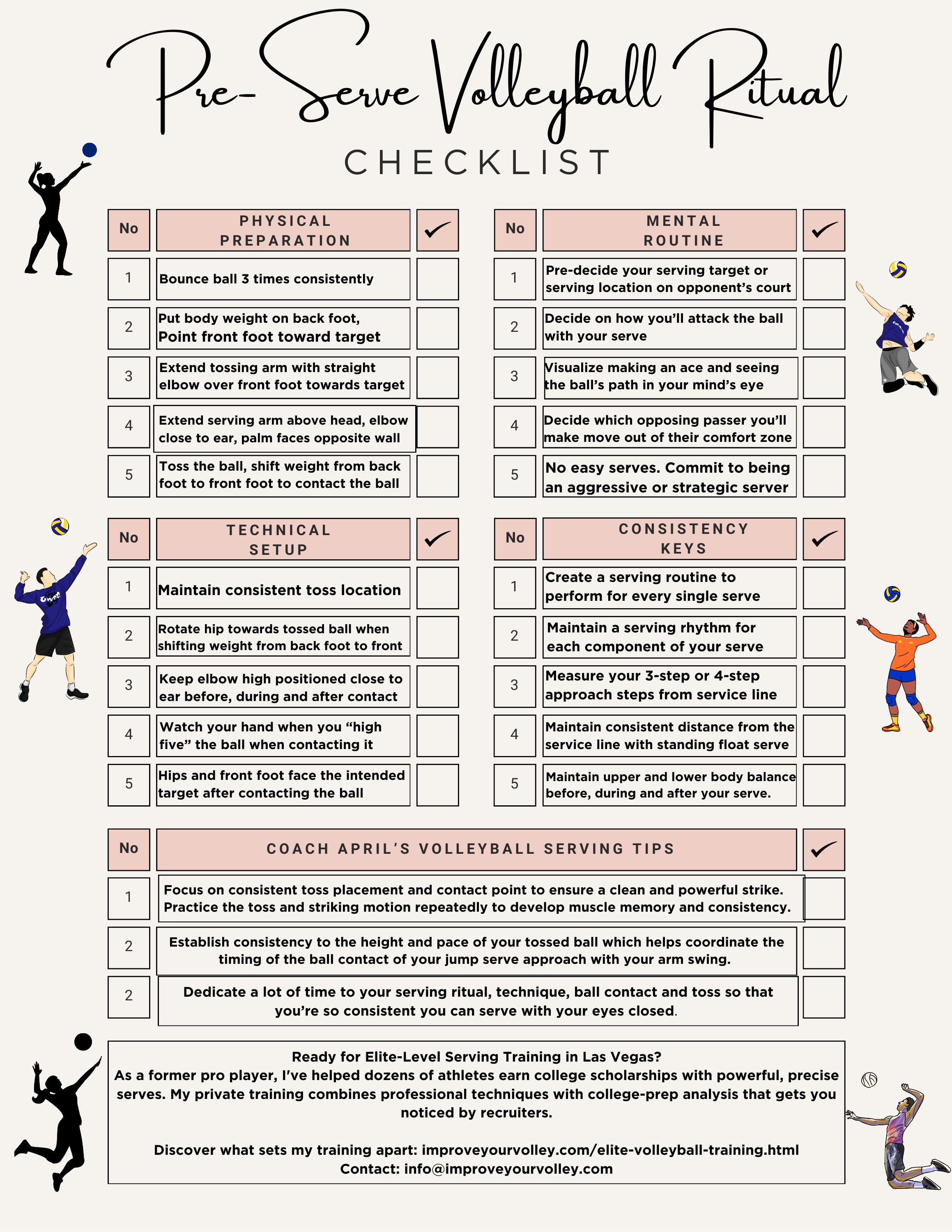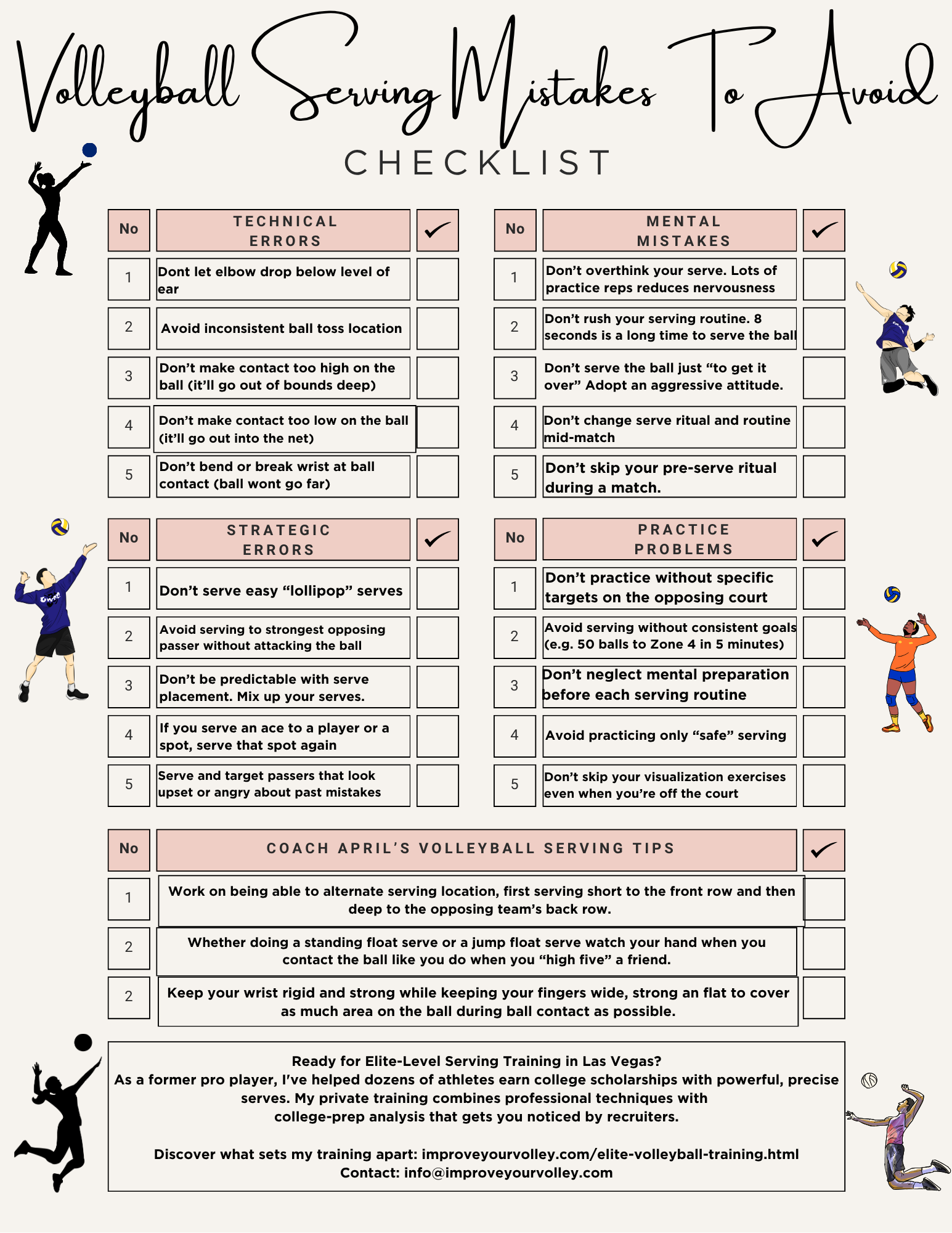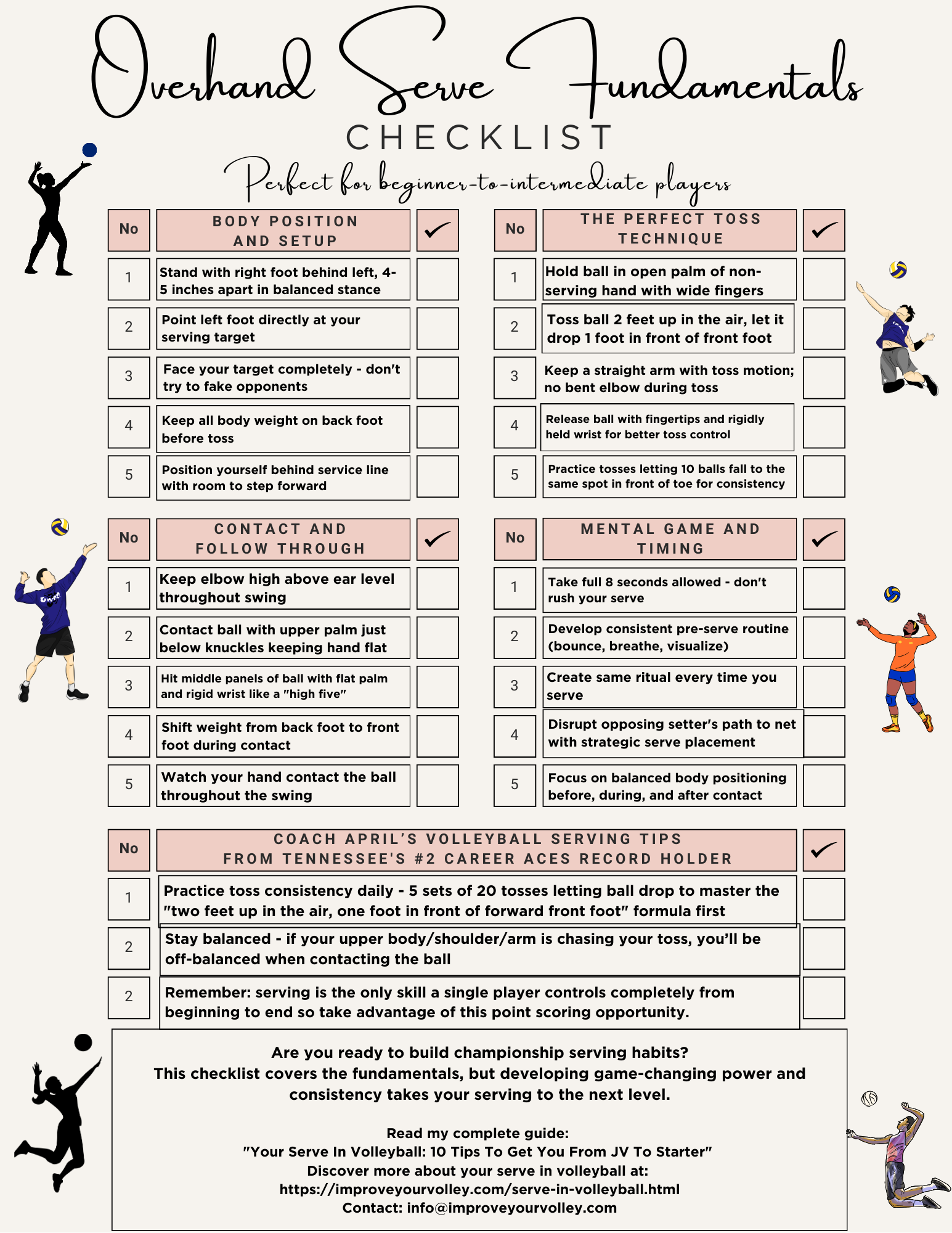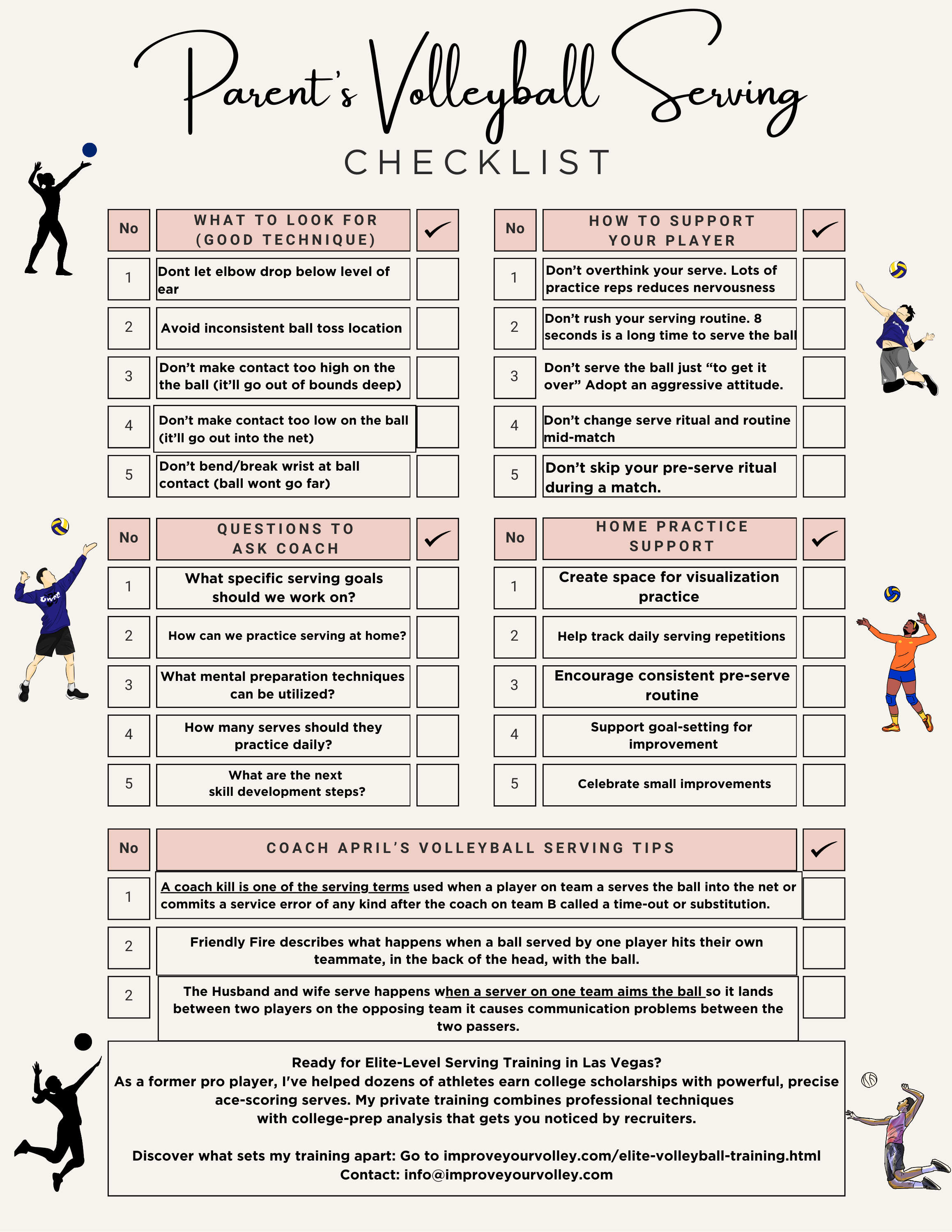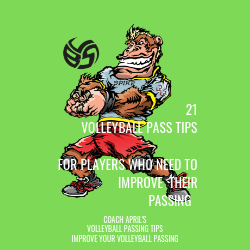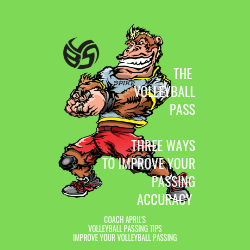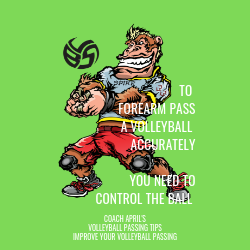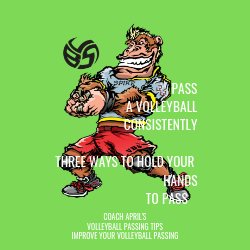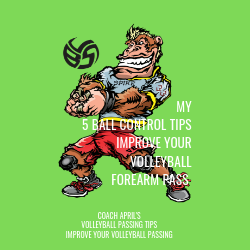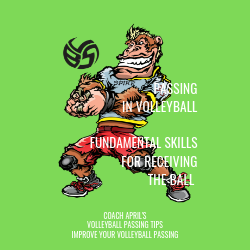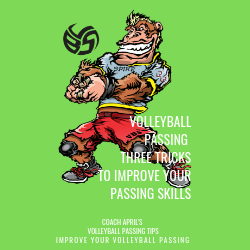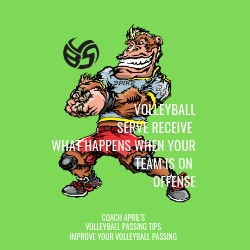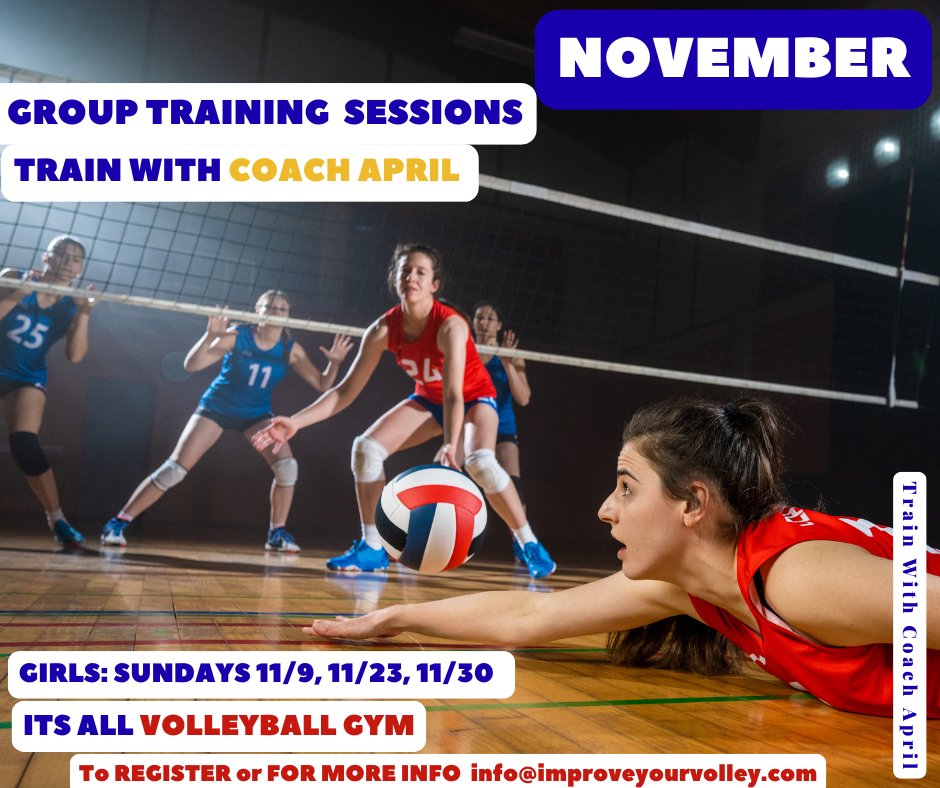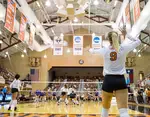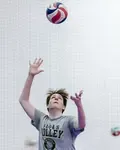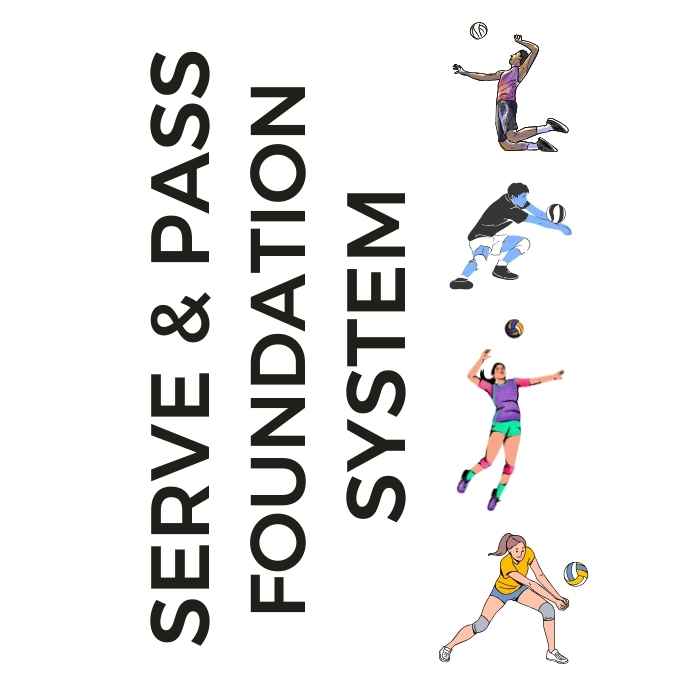
Serve + Pass Foundation System: The Complete Skills Arsenal The two-skill mastery system that transforms inconsistent players into the athletes coaches build their lineups around. Stop Struggling With The Two Most Important Skills In Volleyball!
- Improve Your Volleyball with Coach April
- The 6 Basic Skills of Volleyball All Varsity Players Should Know
- Volleyball Passing Skills
21 Tips For Players To Improve Their Volleyball Passing Skills
21 tips for players to improve their volleyball pass skills with step by step passing instructions from what to watch to how to hold your hands before the serve
These 21 volleyball pass tips describe how you should pass the ball starting from when the ball is in the opposing server's hands until you completely finish your passing action.
21 Tips For Players To Improve Their Volleyball Passing Skills
What is the Correct Way To Pass A Volleyball?
Keep your feet shoulder width apart with your legs slightly bent.
- Having your right foot - inches in front of the left lets you move quickly in any direction.
Do the opposite if you’e a lefty.
Present your platform by wrapping your left hand around your right fist, thumbs pointing straight down to the ground.
- This positions your elbows and arms in a straight platform.
Contact the ball on your forearms.
- Check that your thumbs are always pointing to the ground, maintaining the straight platform needed to pass the ball.
Keep your elbows straight while passing.
- Straight elbows maintain a wider platform, giving you maximum control of the ball
Press both wrists together when passing, without breaking them apart no matter how hard or easy the serve
Make ball contact above the wrists and below the elbows.
- Contacting the ball on your wrists won’t allow you to control the ball
Face your body to the net and angle your platform towards the target before contacting the ball.
- This eliminates adjusting your arms once making contact with the ball
Keep both arms together when passing the ball.
- Keeping them together instead of breaking them apart and passing with one arm helps guide the ball better to the target
Coach April Chapple's Volleyball Passing Tips For Youth Volleyball Players
21 Tips For Players Who Need To Improve Their Volleyball Passing Skills
Remember your goal is to keep from swinging your arms during your passing action.
- Most serves in high school, club or college are fast enough so very little additional arm movement is needed for the ball to reach the target.
Finish your pass with your serve receive platform below your shoulders not above your head.
- This allows you to control the ball when keeping your arms and shoulders within your body range.
Move your feet first to position yourself behind the ball.
- Get your body behind the ball instead of reaching with your arms
- If you’ve heard your coach say “pass with your feet first” that means to let your feet not your arms be first in guiding you in serve receive.
Run with your arms apart to get in position. You’ll move faster.
- You want to be stopped before you pass the ball to avoid running and bumping simultaneously.
- You are not controlling the ball when you run and bump together, and it usually goes right back over the net.
Present your platform after you’ve stopped running.
- Your feet need to be in a balanced position first.
Focus on the ball in the opposing server’s hand, not on the server’s face.
- It’s the ball you need to pass.
- Focus on it as soon as the server gets it in her hands to serve.
Keep your eyes on the ball as it comes across the net.
- Taking your eyes off the ball as it travels over the middle of the court increases the chances of getting aced.
- You may also be unable to make minor adjustments to your feet to accurately pass the ball to your target.
Volleyball Passing Tips: Learn the Do's and Don'ts on Passing In Volleyball
|
Volleyball Passing Form: When Passing Face The Net, Drop The Inside Shoulder and Angle Your Platform Passing in Volleyball: When Passing Avoid Turning To Face Your Target When You Bump A Volleyball Passing in Volleyball: When Passing Beat The Ball Dont Time The Ball |
Passing Don'ts in Volleyball: When Passing Dont Turn To Face The Target Just Angle Your Platform Passing in Volleyball: When Passing Dont Turn To Face The Target Keep Shoulders Parallel To The Net Passing in Volleyball: When Passing Track The Ball When Its In the Opposing Server's Hands Slo Mo |
21 Tips For Players Who Need To Improve Their Volleyball Passing Skills
Anticipate where you need to be. Get there with fast feet BEFORE you start passing the ball.
- By focusing early on the ball while it’s in the server’s hands you get an early indication on whether she is going to serve short, cross court, or down the line.
Keep your eyes on the ball. Visually track it as it leaves the server’s hand, crosses the net, and all the way into your platform.
- Many passers get distracted, taking their eyes off the ball or tracking it once it crosses the net, which is late.
- Focusing on the ball early lets you anticipate necessary minor adjustments in your platform or with your feet.
- Do it early, so you won’t have any more arm adjusting once you make contact with the ball.
As needed for deep serves, shift your body weight from your back (left) foot to your front (right) foot when contacting the ball, without swinging your arms.
- Lefties do the opposite.
Pass with both feet on the volleyball court floor rather than doing the “jump- bump.”
- You can make small adjustments with your feet on the ground which you can’t do with your feet in the air.
In practices, maintain good passing technique all the time, especially for the easy serves.
- You’ve taught your body the proper passing positioning and will automatically react with the correct technique no matter how hard or fast the serve is.
Work on foot speed and agility drills.
- You’ll be able to get behind each ball quickly with your feet first by increasing your short distance speed, giving yourself plenty of time to present your platform, lower your hips under the ball and make the perfect pass.
Click to Download Your Jump Float Volleyball Serve Mastery Checklist pdf:
🎯Jump Float Volleyball Serve Mastery Guide - $7
Are you attempting jump float serves but lacking the technical precision that creates consistent power and accuracy? Why Struggle with Jump Float Serves When You Could Master Them Systematically?
You'll Get:
Approach and Setup Methods --Master 3-step and 4-step approaches with optimal spacing and ball positioning
Jump and Timing Techniques -Perfect the slow-to-fast acceleration that creates maximum vertical lift and power
Ball Contact Fundamentals Learn the "high five" contact method for consistent float effect and accuracy
Landing and Follow-through Execute safe two-foot landings with proper hip rotation and shock absorption
Click to Download Your Tactical Serving Strategy Checklist pdf:
🎯Tactical Serving Strategy Checklist Guide - $7
Are you serving without strategic purpose while opponents easily run their offense? Why React to Opponents When You Could Be Controlling Them?
You'll Get:
Pre-game intelligence methods --Identify technical weaknesses and poor passing habits during opponent warm-ups
Strategic target selections Master seam serving and zone targeting that creates immediate passing problems
Situational serving tactics Know when to serve aggressively vs. safely based on score and game situation
Mental approach strategies Develop point-scoring mentality and force passers out of comfort zones
Coach April's tactical tips Adjust serving strategy mid-game and target front-row hitters effectively
1-page PDF checklist Convenient format you can print or keep on your device for strategic reference
Click to Download Your Consistent Toss Mastery Checklist pdf:
🎯Consistent Toss Mastery Guide - $7
Are inconsistent tosses sabotaging your serves and forcing you to chase the ball? Why fight your toss when you could master the foundation of every great serve?
Volleyball Passing Skills:
Where Do You Go From Here?
Your three options are:
- You can learn more Volleyball Pass Tips in by visiting the Related Links below.
- Follow the suggested reading on our Sitemap page Learning How To Play (Sitemap)
- Or visit the pages in the How to Play Volleyball section in the drop down menu at the top of the page to get started.
If your athlete struggles with consistent serve receive, gets subbed out, or is overlooked for playing time—this is the fix you’ve been looking for.

Struggling with passing consistency?
I help talented passers tired of getting pulled from games because of inconsistent serve receive skills BUILD passing confidence without expensive private lessons using the same 3-step system that's helped dozens of my athletes get recruited.
Download my eBook for $17.99 and start building the passing confidence that keeps you on the court—and gets you seen by college coaches.
From Lady Vol to Legend: Coach April Produces Powerful Passionate Players...is that you?
What Are You Looking For?
Click to Download Your Pre Serving Ritual Mastery Checklist pdf:
🎯Volleyball Pre Serving Ritual Guide -
Players! Learn How To Transform Your Serve from Weak to Weapon
Click to Download Your Parent's Volleyball Serving Checklist pdf
🎯Parent's Volleyball Serving Checklist Guide
Parents! Help Your Player Develop Championship Serves (Even If You've Never Played)

Hi there!
Thanks for stopping by. Hope you learned something today that will help you reach your volleyball goals.
Be sure to subscribe to my email newsletter so you can learn more each week!
Stay strong! Stay motivated!
-Coach April

SUSCRIBE to my email newsletter below!
 Click to learn more about the weekly volleyball classes and clinics or email info@imrpoveyourvolley.com for information
Click to learn more about the weekly volleyball classes and clinics or email info@imrpoveyourvolley.com for informationCongratulations to my seven Boys-18s Vegas Volley club players who played in two state championship finals yesterday, the 3A and 5A State champinship finals at Sunrise Mountain High School.
TOURNAMENT CHAMPIONS!
A-1 Vegas Volley VBC
In It To Win It Tournament
May 2 - 4, 2025 Tournament
Gold Medalists
18s Premier Division
Vegas Volleyball's Unsung Heroes: Celebrating Moms with Peace Love Volleyball Shirts
Ready to energize your volleyball mom journey?
Subscribe to my 'Producing Powerful Passionate Peaceful Players' email list above on ImproveYourVolley.com.
You'll receive energy-boosting tips, exclusive insights from me, Coach April Chapple on maintaining momentum in volleyball.
Let's power up the Vegas volleyball scene together!
Recent Articles
-
5 Essential Serving Tips from Tennessee's #2 Career Aces Record Holder
Dec 09, 25 11:39 PM
I've identified the 5 essential serving tips that separate confident servers from struggling ones and you'll serve with the confidence that creates aces -
The Volleyball Toss How Consistent Is Your Ball Toss Before You Serve?
Dec 07, 25 12:29 AM
The volleyball toss for the overhand serve needs to consistently be two feet up in the air and one foot in front of front foot which puts the ball in front of your serving arm. -
Shop Small: Real Volleyball Training With + Results From A Real Coach
Dec 03, 25 10:30 AM
Support a woman-owned business. Get training from a former elite pro with 13+ years coaching experience. Ditch the big box store--invest in proven results.
 Resee the Kangaroo Shirts
Resee the Kangaroo Shirts Resee the Volleybragswag Kangaroo Shirts available now.
Resee the Volleybragswag Kangaroo Shirts available now.